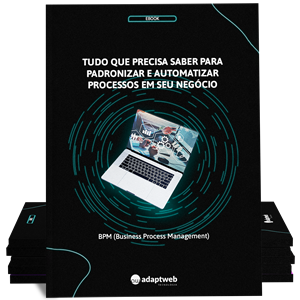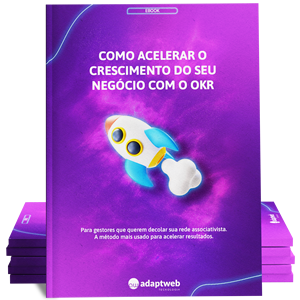The first is that it fails to take into account the time value of money (TVM) and adjust the cash inflows accordingly. The TVM is the idea that the value of cash today will be worth more than in the future because of the present day’s earning potential. This analysis method is particularly helpful for smaller firms that need the liquidity provided by a capital investment with a short payback period.
Many managers and investors thus prefer to use NPV as a tool for making investment decisions. The NPV is the difference between the present value of cash coming in and the current value of cash going out over a period of time. We can calculate payback using two formulas depending on whether a project generates even cash inflows or uneven cash inflows. It measures the time in which the initial outlay of an investment is expected to be recovered through the cash inflows generated by the investment. Suppose a company gets a shorter payback period, which is the goal of the payback period. Cash flows may stop once the payback period ends, making such a project meaningless.
- However, in certain cases, it may be smarter to look at longer-term cash flow.
- Or if purchasing multiple cheaper and smaller capacity units would make more sense than buying one enormous, expensive monumental support.
- This process is continued year after year until the accumulated increase in cash flow is $16,000, or equal to the original investment.
- For a business to truly understand what a potential project can do for them they must have more information than just how fast the initial investment can be paid back.
She has worked in multiple cities covering breaking news, politics, education, and more. Her expertise is in personal finance and investing, and real estate. Julia Kagan is a financial/consumer journalist and former senior editor, personal finance, of Investopedia. J.B. Maverick is an active trader, commodity futures broker, and stock market analyst 17+ years of experience, in addition to 10+ years of experience as a finance writer and book editor.
What is the Pay-back Period Method?
A higher payback period means it will take longer for a company to cover its initial investment. All else being equal, it’s usually better for a company to have a lower payback period as this typically represents a less risky investment. The quicker a company can recoup its initial investment, the less exposure the company has to a potential loss on the endeavor.
- It measures the liquidity of a project rather than its profitability.
- Even though the payback period in a project has many benefits, still, the payback method alone is insufficient justification for an item of capital expenditure.
- A dollar that you invest today is not going to be worth the same as one invested 20 years ago.
- By the end of Year 4, the cumulative cash flow is ₦300,000, which is more than the initial investment.
- Although calculating the payback period is useful in financial and capital budgeting, this metric has applications in other industries.
If your company is concerned at all about cash flow for the business over time, this method is not going to give you any information to work with. As every project is going to provide cash flow on a different schedule, it is going to be impossible to make any but the most basic decisions based on this method. A business needs to know what kind of cash flow they should expect from their investments for the entire length of the project. Small businesses are going to have very limited funds to be able to invest in projects, so they must be extremely careful with their spending. This method of capital budgeting is a great way for a small business to easily decide what project is going to pay off the most. Sometimes for a small business, you must look solely at the profit and cash flow to be able to grow, and the payback period method can help you make solid investments.
Advantages and Disadvantages of the Payback Period
The management of Health Supplement Inc. wants to reduce its labor cost by installing a new machine in its production process. For this purpose, two types of machines are available in the market – Machine X and Machine Y. Machine X would cost $18,000 where as Machine Y would cost $15,000. This method also does not take into account what type of corporation is a nonprofit other factors such as risk, financing or any other considerations that come into play with certain investments. A payback period is a comparative tool between investment and doing nothing. Still, it does not provide any other criteria for making a choice (except, perhaps, that the payback period should be less than infinity).
AccountingTools
A shorter payback period also implies that the project frees up cash for other uses sooner, which increases the liquidity and flexibility of the firm. Given the disadvantages of the payback period, you may wonder what other methods of evaluating investment projects are available and how they compare to the payback period. Some of the common alternatives to the payback period are the net present value (NPV), the internal rate of return (IRR), and the profitability index (PI). These methods are based on the concept of discounted cash flow (DCF), which accounts for the time value of money and the risk-adjusted cost of capital. The NPV measures the difference between the present value of the cash inflows and the present value of the cash outflows of the project. A positive NPV means that the project adds value to the firm and should be accepted.
What are the advantages and disadvantages of using the payback period as a decision criterion?
In its first three years, the project is expected to return net cash of $10,000, $25,000, and $50,000. There is some usefulness to this method, especially in quick-moving industries with a lot of rapid change. The problem for most businesses is that they need to have a better balance of projects and investments so that their short, mid, and long-term needs are all taken care of. No business is going to be able to rely on this method for their investment opportunities if they want to have a stable future ahead. It is always better to use a variety of methods to make important decisions. It is possible that a project will not fully recover the initial cost in one year but will have more than recovered its initial cost by the following year.
However, we know that money has a time value, and receiving $6,000 in year 1 (as occurs in Project C) is preferable to receiving $6,000 in year 5 (as in Projects B and D). From what we learned about the time value of money, Projects B and C are not identical projects. The payback period method breaks the important finance rule of not adding or comparing cash flows that occur in different time periods. The principal advantage of the payback period method is its simplicity.
For this reason, the simple payback period may be favorable, while the discounted payback period might indicate an unfavorable investment. Nothing is going to hurt small or medium businesses more than a massive loss on an investment. Unless you are at the top of your industry, there are always going to be tight budgets and financial constraints, and any big losses could mean major issues. The payback period refers to the amount of time it takes to recover the cost of an investment. Moreover, it’s how long it takes for the cash flow of income from the investment to equal its initial cost.
Some companies rely heavily on payback period analysis and only consider investments for which the payback period does not exceed a specified number of years. The Pay-back period, in the context of Managerial Economics, serves as a metric for evaluating investment projects. It facilitates a comparative analysis of alternative projects, effectively guiding managerial decision-making. Small businesses generally have minimal funds to invest in their businesses. They can, however, use the limited funds wisely and choose the most effective project that will be profitable.









